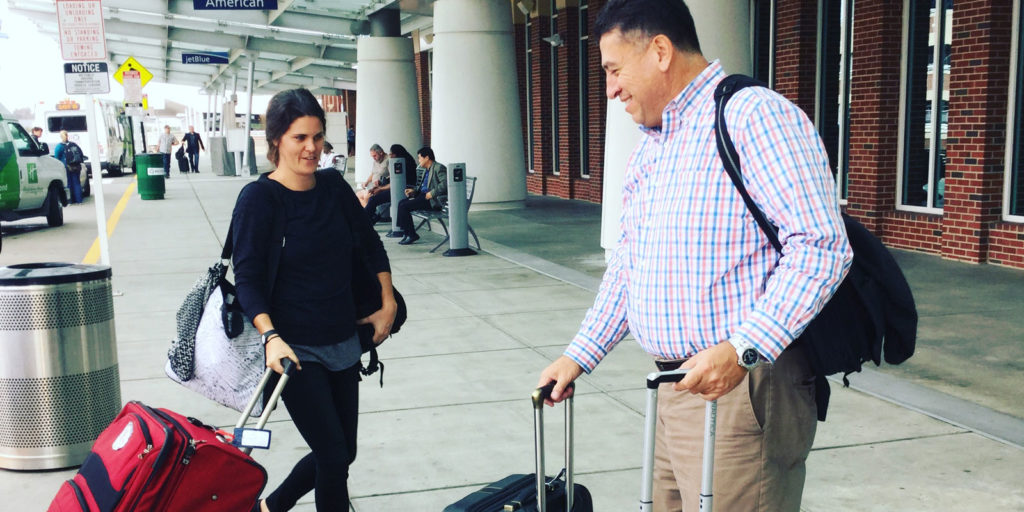En route to Mexico, I noticed that I felt differently than I had on our way to visit other Children Incorporated projects. The excitement I normally felt was there — it’s always exciting to meet the children and the people who take care of them — but there was something else, too.
But I’ve seen what good work can do to change the lives of individuals, which then changes the lives of their families, which then changes the lives of generations to come.
Unlike the other places we’d visited thus far, I’ve been to Mexico before. I spent several months in a city called Cuernavaca more than a decade ago, taking language classes and experiencing the rich culture of what I felt was one of the most beautiful countries I had ever seen. But I knew this time would be so different. Our trips don’t take us to see the children with advantages. We visit schools, homes, and neighborhoods that most people I know would never see in their lives —impoverished areas that are difficult to witness. From my experiences in Bolivia, Africa, and Kentucky, I knew that it’s these kinds of experiences that are so important to have. It helps me understand the impact that sponsorship makes for disadvantaged children.
Luis explained to me before we left that our affiliate projects in Mexico are mostly group homes, unlike the schools or community centers I’ve become used to visiting. These homes serve children who would otherwise have to scrape a living alone on the street, or children whose parents can’t take care of them any longer. Typically, they’re run by nuns who see to it that the children are fed, go to school, and live in a safe and nurturing environment.
Now Arriving in Mexico City
At 8.84 million people, Mexico City is the largest Spanish-speaking city in the world, not to mention the oldest city in the Americas. It’s grown so quickly as a booming financial center, with so many poor villagers from the surrounding countryside flocking to the city, that the government hasn’t been able to keep up with the surge in population. By the 1990s, pollution was so rampant that Mexico City was one of the world’s most polluted cities — a title that’s since been removed due to dramatic efforts to reduce that pollution. It’s a hotbed for culture, with art, museums, theater, cuisine, expansive public parks, and a vibrant shopping scene.
But as with every major city with a huge concentration of human beings to clothe, feed, shelter, and employ, Mexico City has poverty problems. And with poverty problems come children who need help. I’ve seen it before in so many other places, but each situation is different.
It helps me understand the impact that sponsorship makes for disadvantaged children.
Moving forward
Once we’re outside of Mexico City, we’ll be taking the bus to visit three other major cities: San Miguel Allende, a cosmopolitan but historically significant city east of here; Guadalajara, a really beautiful city that’s the birthplace of mariachi and other distinctive Mexican cultural aspects; and Monterrey, a city in the northeast part of the country. I’ve visited the former and latter before, but not as a Children Incorporated representative, and I expect the experiences to be very eye-opening. Mexico’s population is close to 115 million, with 18.2% estimated as not having enough food to eat every day. If you expand your definition of poverty to include assets, the number shoots up to 47%.
But I’ve seen what good work can do to change the lives of individuals, which then changes the lives of their families, which then changes the lives of generations to come. Our Mexican adventure is going to have that same mixture of somber reality and uplifting hopefulness as the rest of the trips I take with Luis.
***
HOW DO I SPONSOR A CHILD IN MEXICO?
You can sponsor a child in Mexico in one of three ways – call our office and speak with one of our sponsorship specialists at 1-800-538-5381, email us at sponsorship@children-inc.org, or go online to our donation portal, create an account, and search for a child in Mexico that is available for sponsorship.

